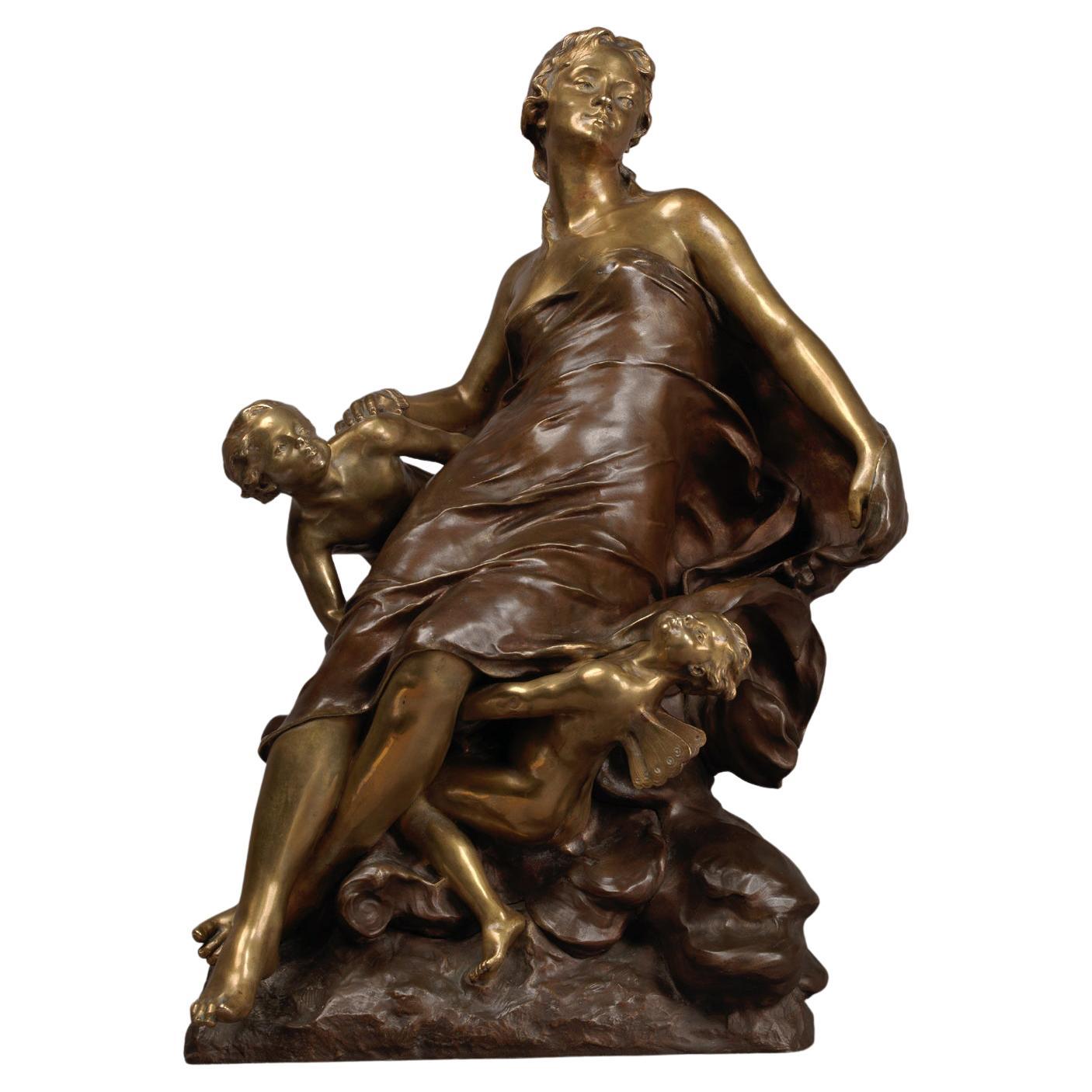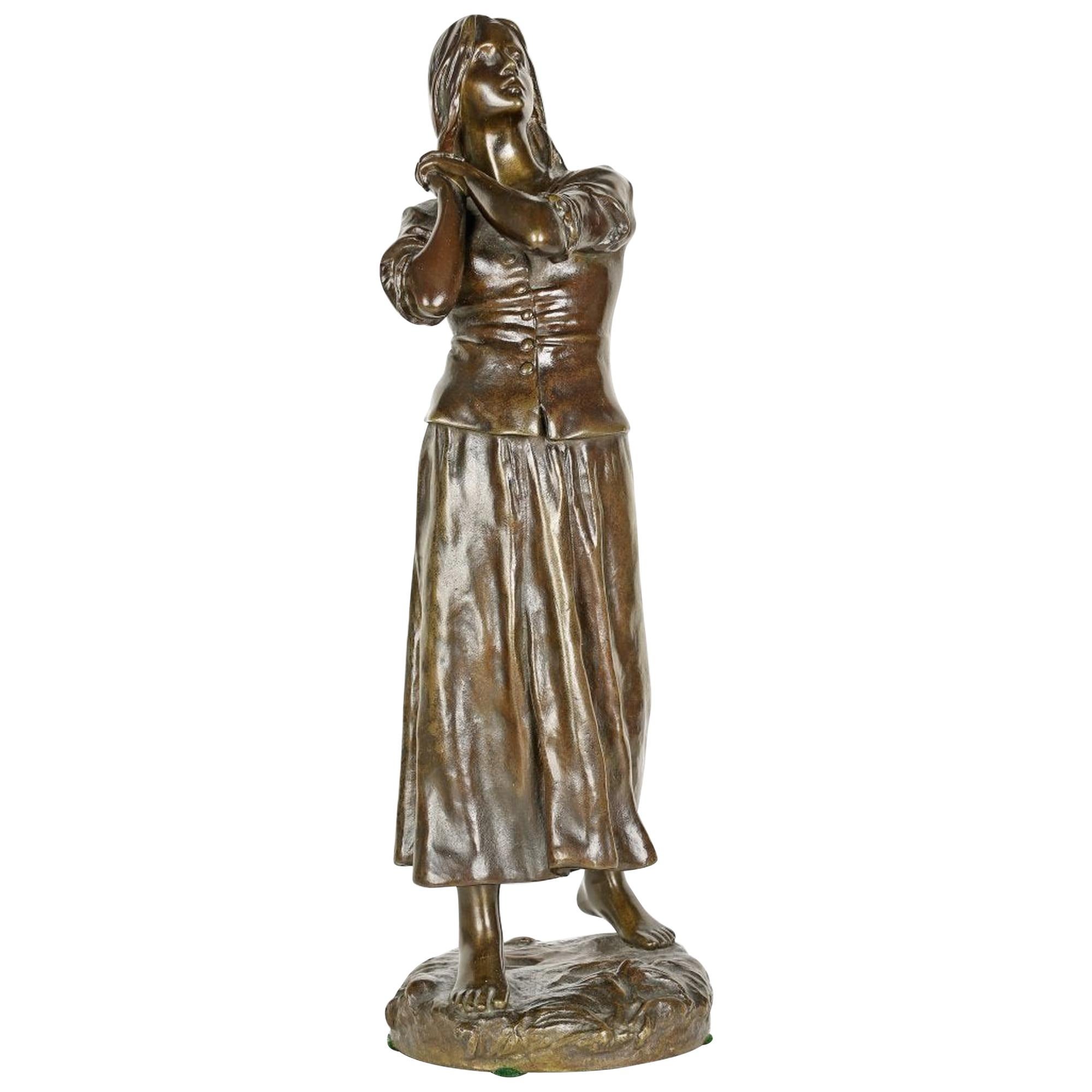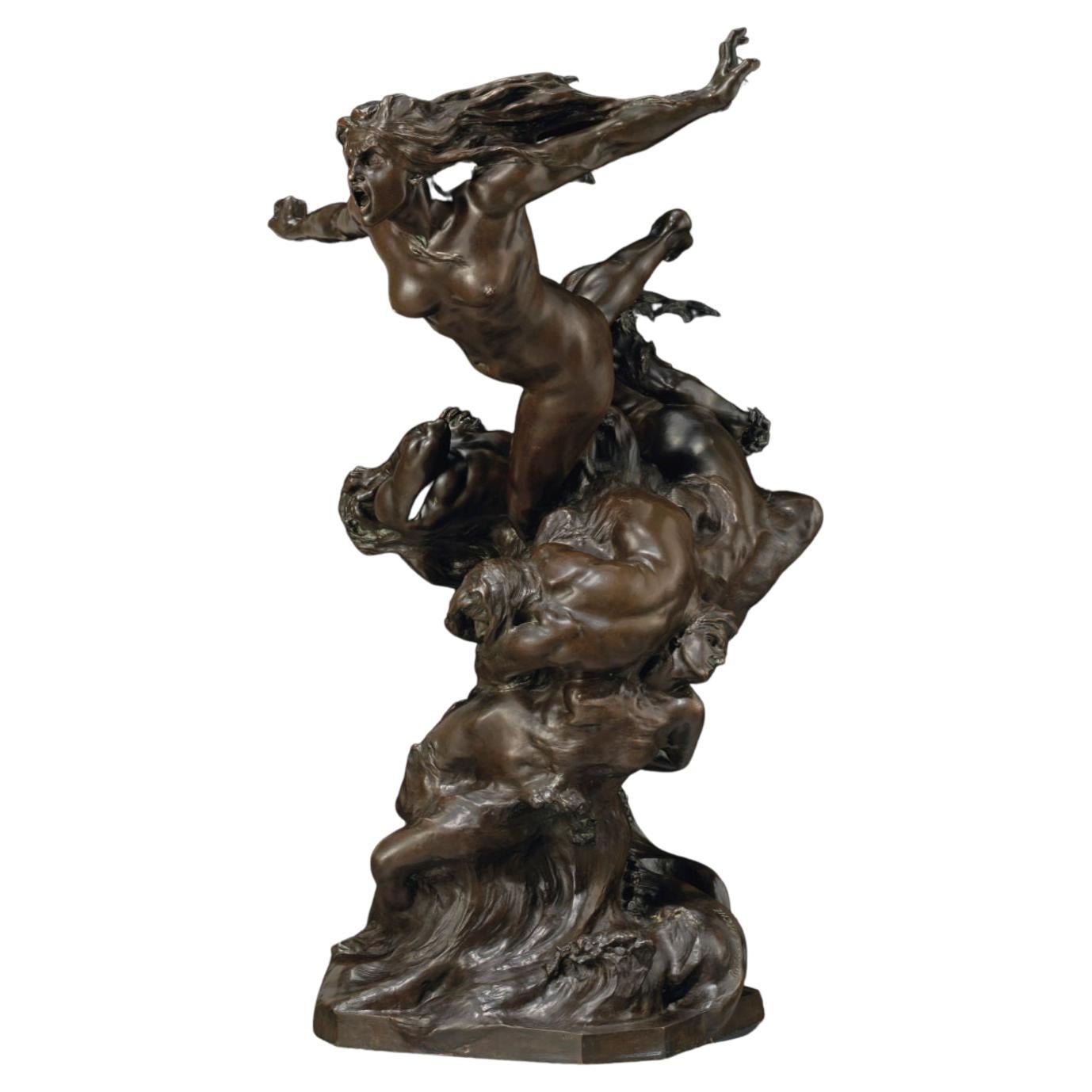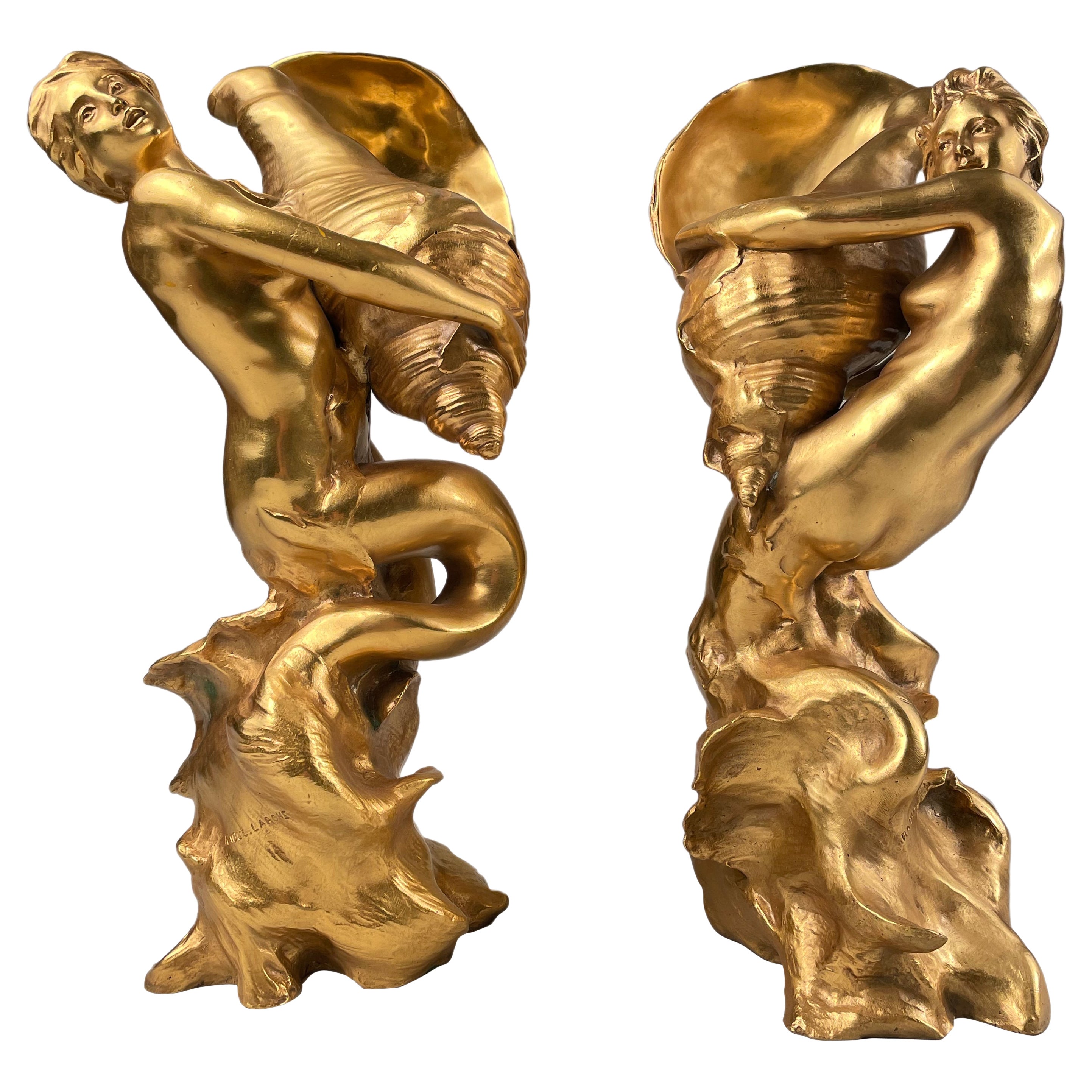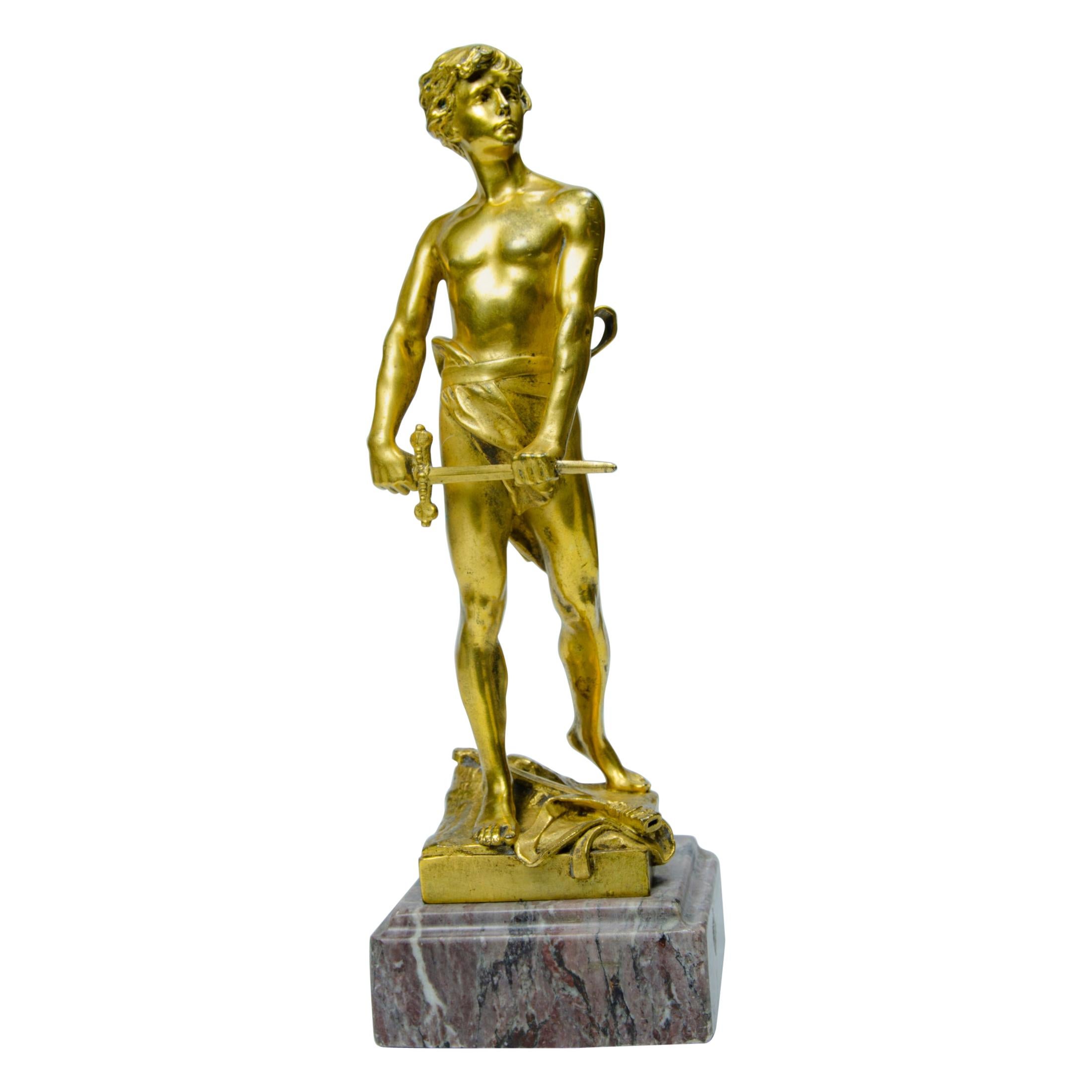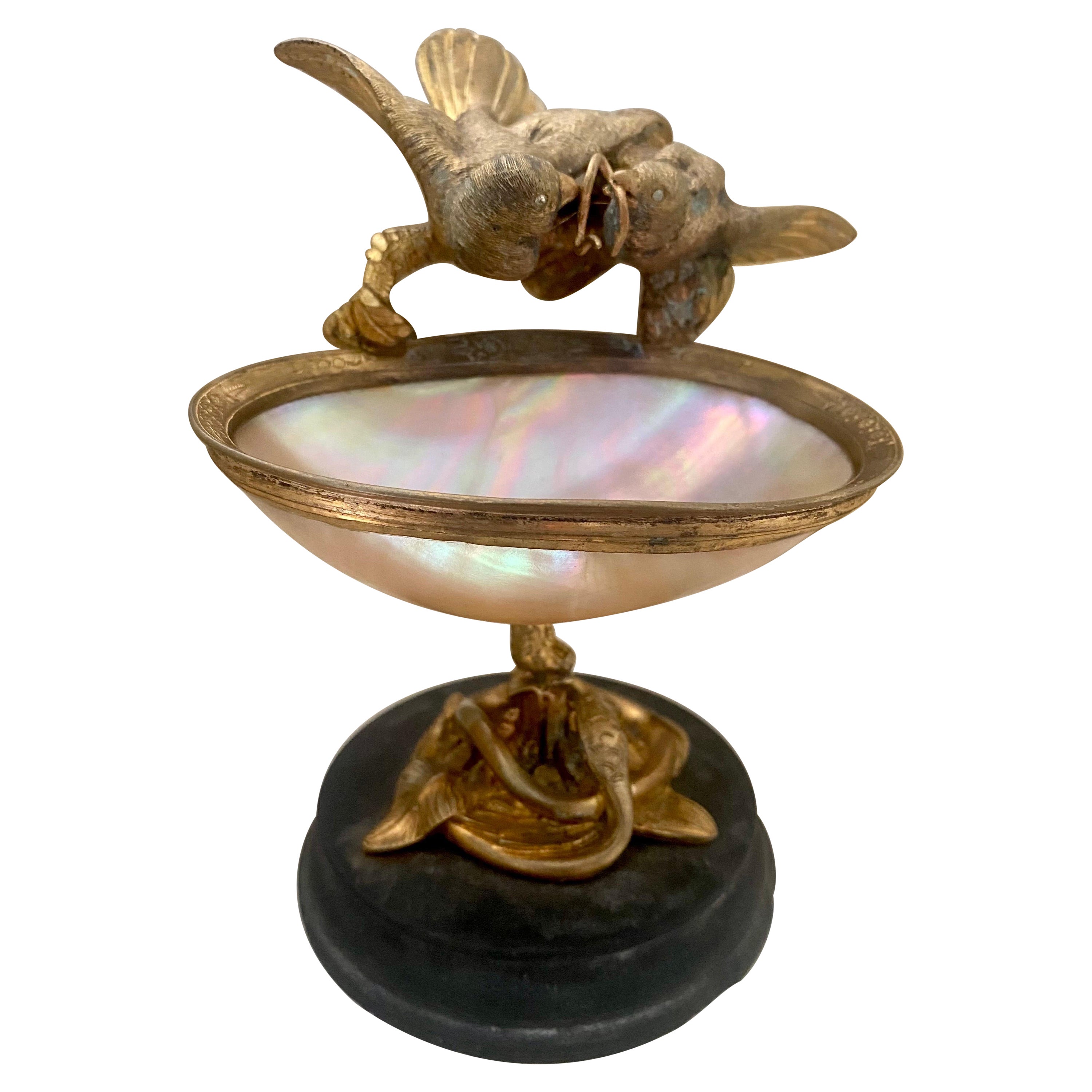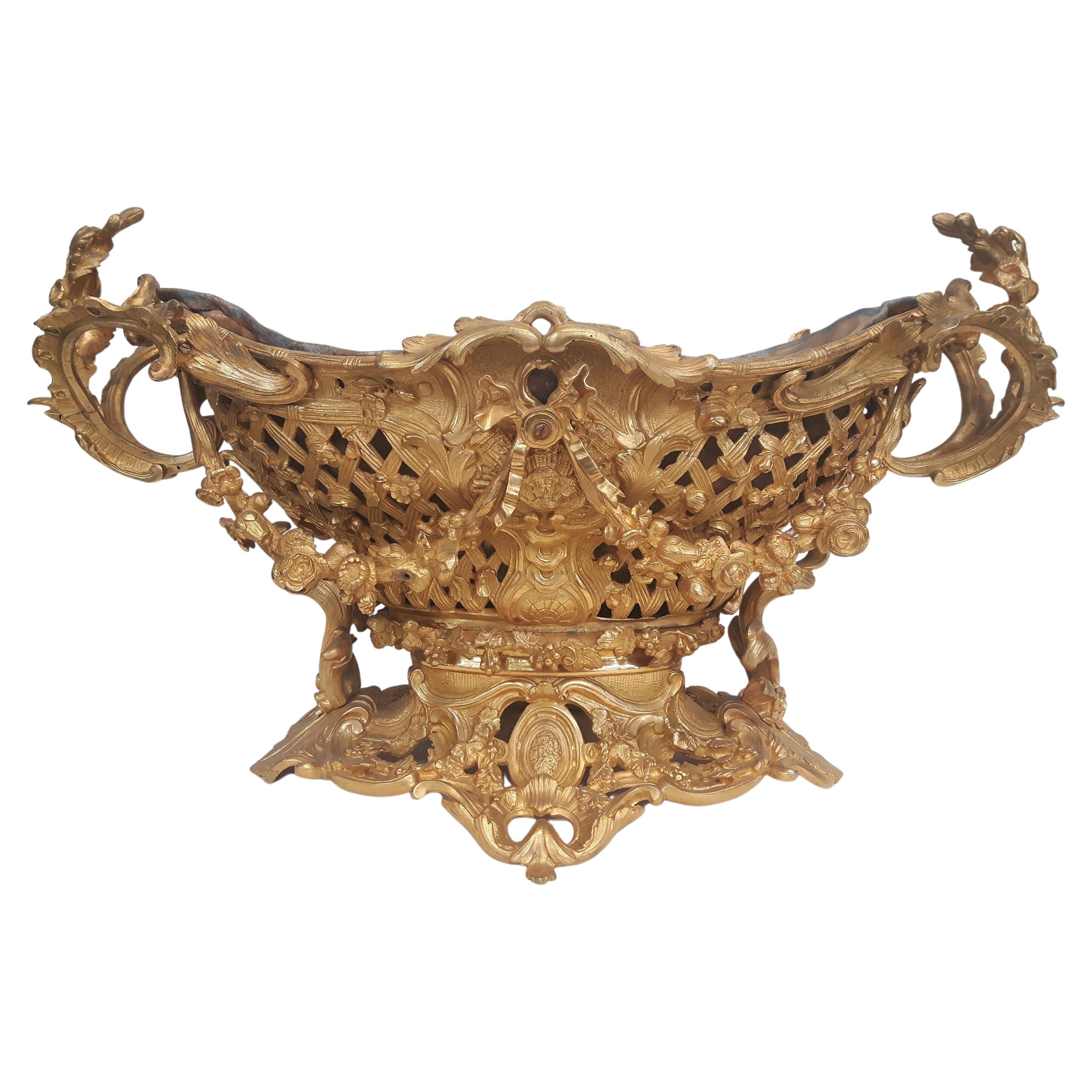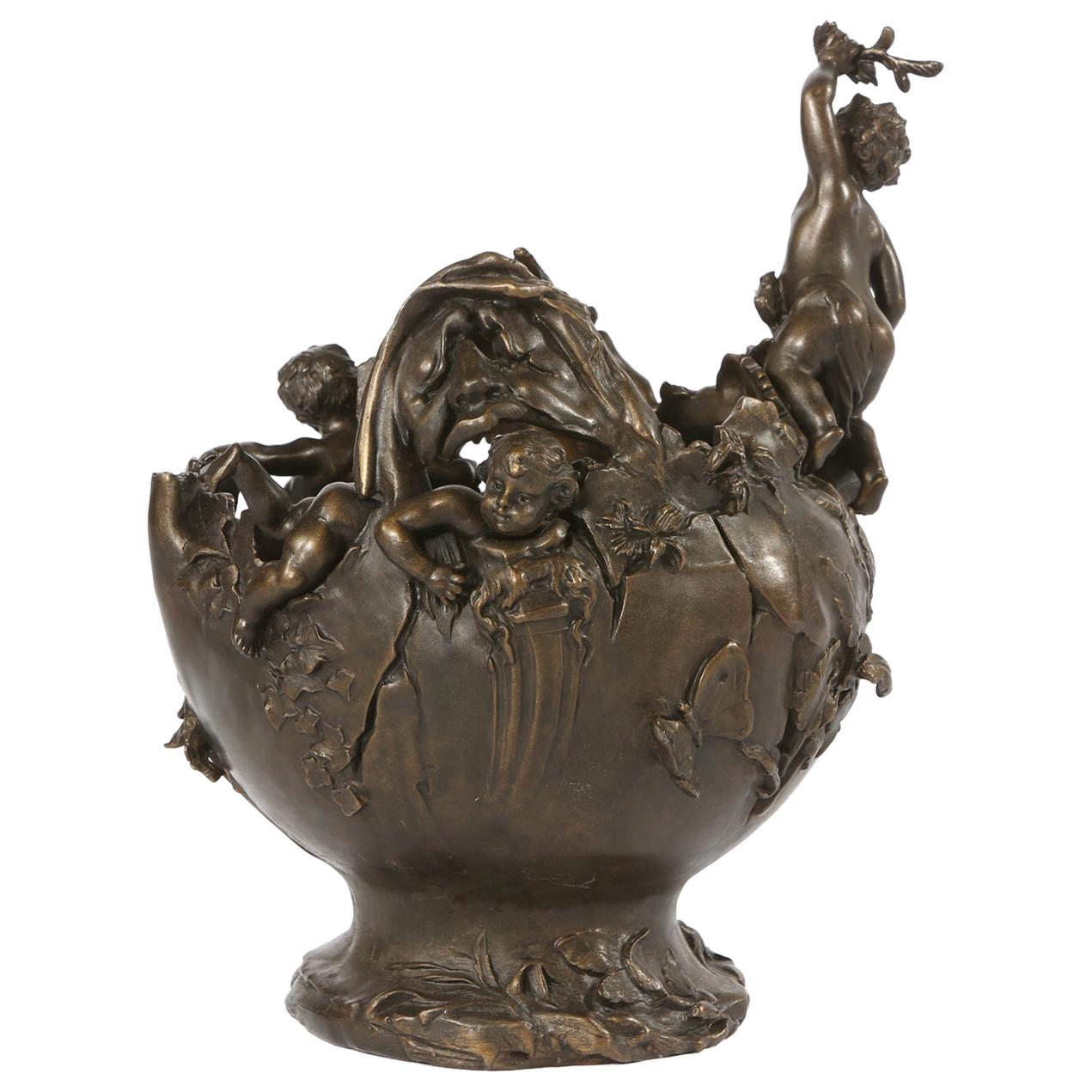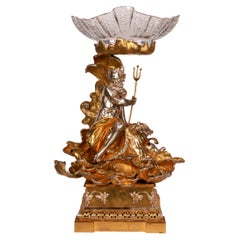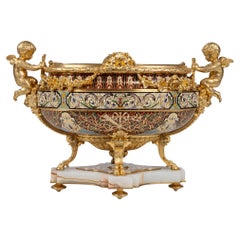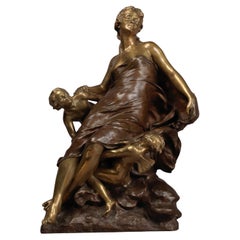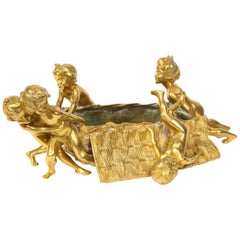
Francois-Raoul Larche a French Gilt Bronze Table Centerpiece
View Similar Items
Want more images or videos?
Request additional images or videos from the seller
1 of 21
Francois-Raoul Larche a French Gilt Bronze Table Centerpiece
About the Item
- Creator:François-Raoul Larche (Sculptor)
- Dimensions:Height: 6.5 in (16.51 cm)Width: 19 in (48.26 cm)Depth: 10 in (25.4 cm)
- Style:Art Nouveau (Of the Period)
- Materials and Techniques:
- Place of Origin:
- Period:
- Date of Manufacture:circa 1900
- Condition:Wear consistent with age and use.
- Seller Location:New York, NY
- Reference Number:1stDibs: LU1798222365092
About the Seller
5.0
Vetted Seller
These experienced sellers undergo a comprehensive evaluation by our team of in-house experts.
Established in 1980
1stDibs seller since 2016
58 sales on 1stDibs
More From This SellerView All
- Monumental Silvered and Gilt-Bronze Glass Centerpiece of "Poseidon"Located in New York, NYA Monumental French Silvered and Gilt-Bronze and Glass Centerpiece of "Poseidon", Paris, circa 1895. A very good quality centerpiece depicting "Poseidon and his seahorses", of mon...Category
Early 20th Century French Classical Greek Centerpieces
MaterialsBronze
$57,000 Sale Price24% Off - A Fine French Ormolu, Champleve Enamel, and Onyx Figural Centerpiece JardiniereBy Ferdinand BarbedienneLocated in New York, NYA truly exceptional French ormolu, champlevé enamel, and onyx jardinière centerpiece. This magnificent piece epitomizes the opulence and elegance of the Belle Époque era, combining e...Category
Antique 19th Century French Napoleon III Planters, Cachepots and Jardini...
MaterialsOnyx, Bronze, Enamel, Ormolu
- Isidore-Jules Bonheur, A Rare Gilt and Patinated Bronze Jockey on A HorseBy Isidore Jules BonheurLocated in New York, NYIsidore-Jules Bonheur (French, 1827–1901) A Rare Gilt and Patinated Bronze Jockey on A Horse, circa 1875. Introducing a truly exceptional and highly s...Category
Antique 19th Century French Sporting Art Animal Sculptures
MaterialsBronze
- Chaumet Paris, a French Silver-Gilt Seahorse Mounted Rhodochrosite CupBy ChaumetLocated in New York, NYChaumet Paris, A French Silver-Gilt Seahorse Mounted Rhodochrosite cup Circa 1980. An exceptional object A quadrangular cut cup in rhodochrosite and the handle made of a sea...Category
Late 20th Century French Brutalist Mounted Objects
MaterialsSterling Silver
- Mellerio Paris, A French Gold, Diamond, Silver-Gilt, Rock-Crystal, & Lapis HorseBy MellerioLocated in New York, NYMellerio Paris, A French Gold, Diamond, Silver-Gilt, Rock-Crystal, Obsidian & Lapis Horse An extremely rare and unique, one of a kind French gold, diamonds, Silver-gilt rock-crystal, obsidian and lapis lazuli jeweled sculpture "Bucéphale, Chevaux de légende", "Bucephalus, A Legendary Horse" by Mellerio, Paris, circa 1998. Sitting on black obsidian base, the solid rock crystal slab is finely applied with a lapis lazuli half-horse with harness mounted in 18k gold and brilliant cut diamonds, between two crystal and lapis lazuli columns adorned with gold and diamonds, insert with 7 ruby cabochons and 1 emerald cabochon, the obsidian base with a plaque engraved: CHEVAUX DE LEGENDE / MELLERIO DITS MELLER / PARIS / 5029 DIV Bucephalus (c355-326 BC) is among the most famous horses in history, and it was said that this he could not be tamed. The young Alexander the Great, of course, tamed him – and went on to ride his beloved equine companion for many years and into many battles. The piece is in excellent condition and comes with a custom made wood case made for transport. It's very elegant and has French hallmarks throughout. A truly magnificent piece. Measures 10" high x 9" wide x 4" deep Founded in France in 1613 by the descendants of Italian immigrants from the Vigezzo Valley in the north of Italy, Mellerio is one of the oldest jewellery houses in Europe. The family business soon attracted the attention of the Royal Court and Marie Antoinette herself reportedly purchased a precious bracelet featuring 7 cameos surrounded by rubies in 1780. Later on, in the 19th century, Mellerio became the official supplier of the French Royal family and the Court of Netherland. Mellerio creates many jewellery items, all set with rare gems such as peridots, amethysts, aquamarines, citrines and topaz, applying for a patent, the flexible stem, a very supple and light jewellery mechanism. Mellerio remains also well known for their spectacular series of Art Nouveau jewels, created at the beginning of the 20th century, as well as for the creation of trophies rewarding some of the greatest footfall and tennis players of history. In 1993, the jewellery house launched their first watch collection. Today, Mellerio has stores in Paris, Japan and Hong Kong. July 14, 1789: this date is known throughout the world as the beginning of the French Revolution. According to a ledger belonging to House of Mellerio, this was also the day that the jeweler sold a golden key to the Comte de Coutance for 10 livres. This ledger, as well as inventories dating as far back as 1768, are the jeweler’s oldest archives. These archives have continued to grow over the years, as the House, established on rue de la Paix in Paris, still lives on today, still in the hands of the same family from Craveggia, in the North of Italy. The tumultuous history of the Mellerio family in France probably goes as far back as the Italian wars of the Renaissance, but the first official document proving their commercial activity in Paris dates back to 1613. This document is the famous royal warrant awarded by Marie de Medici to a number of Italian families established along the rue des Lombards, including the Mellerios, allowing them to sell “small jewelery items”, therefore granting them a small exception to the traditional monopoly enjoyed by Parisian jewelers. At that time, powerful corporations regulated the operations and customs of Parisian business, but thanks to this exceptional warrant, the Mellerios managed to escape the confines of this framework. Today, this wax-sealed document is kept at the city hall of Craveggia. From 1613 to the Revolution, the Mellerios lived between France and Italy. The corporations tried many times to put an end to their trade privileges, but all in vain, as a dynasty of sovereigns renewed the warrant. Always marrying and often retiring in Craveggia, the Mellerios continued to maintain their jewelry business in Paris. At first, they did this without a shop. Wearing backpacks (wooden boxes divided into small compartments where jewels were kept), they would tour town fairs around Paris and royal castles. This is how Jean-Baptiste Mellerio (1765-1850) is said to have sold a bracelet set with rubies and Antique cameos to Marie-Antoinette, which still exists today. Many elements seem to prove the veracity of this anecdote. The queen was particularly fond of cameos, which cover the entire background of her famous jewelry cabinet, and ruby was her favorite stone after diamond. The famous bracelet, reacquired a few years ago by the House of Mellerio, is indeed an 18th century jewel, set with antique cameos representing the profiles of Roman emperors. Two branches of the family were operating in Paris during this time, under the reign of Louis XVI: that of Jean-François (1746-1828), the paternal ancestor of the current Mellerios, and that of Jean-Baptiste (1765-1850). The French Revolution forced them to return to Italy. However, both Jean-Baptiste and François Mellerio (1772-1843), who was the son of Jean-François, were eventually able to return to Paris after the founding of the Consulate. Jean-Baptiste opened a shop at the Iron Crown of rue Vivienne, and François opened his at the Palais des Tuileries, rue du Coq Saint-Honoré. His well-organized order books give an idea of his high-ranking clientele during the “Old Regime”, among which were the Comte and Comtesse Octave de Segur, the Marquise (later Duchess) de Tourzel, former governess of the royal children, and her daughter, the Comtesse de Bearn, the Craufurds -who organized the flight to Varennes, the Duc and Duchess de Gramont, the Comtesse de Boigne, and Madame de Souza, Talleyrand’s mistress. We also see the names of the imperial family: Empress Josephine, the Queen of Holland, Princess Elisa, Caroline and Pauline. At that time, the House of Mellerio specialized, among other things, in the trade of antique cameos, a newly fashionable genre of jewel that captured the imagination of all the princesses and noble women of the time. The years of the Restauration and July Monarchy were among the most glorious. The Bourbons were back on the throne, and the clientele of the House of Mellerio had regained its former wealth. Mellerio supplied Louis-Philippe, Duke of Orléans, as well as his mother, wife and sister, with sumptuous jewels, including a set of emeralds made piece by piece, while the Duke of Bourbon, last prince of the House of Condé, offered diamonds to his mistress, the scheming Baronne de Feucheres, and Monsieur de LaFayette also bought cameos for one of his granddaughters. For the first time, Mellerio ventured into the world of arts in 1815, when Carlotta Grisi, a famous dancer who created Giselle, as well as an actress named Rachel, bought jewels at the Mellerio store on rue de la Paix. 1848 marked a new turning point. France once again became a Republic. François Mellerio handed the company over to his son, Jean, and the latter decided to travel to Spain to build a new clientele. He later became one of the jewelers of the royal family, and met Eugénie de Montijo, who remained a faithful client when she became empress of the French people. The Imperial years were lavish. During the Second Empire, Paris was a pageant of crinoline dresses designed by Worth, while jewels by Mellerio, Worth’s neighbour on the rue de la Paix, adorned the noble women of the Tuileries court. The Empress bought pearls. Mathilde Bonaparte...Category
20th Century French Mounted Objects
MaterialsLapis Lazuli, Rock Crystal, Gold, Silver
- Exceptional French Orientalist Bronze Sculpture "Le Marchand d' Armes Turc"By G. GueytonLocated in New York, NYAn Exceptional French Orientalist Bronze Sculpture "Le Marchand d' Armes Turc" (The Turkish Arms Dealer) by G. Gueyton, (French, 19th Century) Discover the allure of the Orient thro...Category
Antique 19th Century French Figurative Sculptures
MaterialsBronze
You May Also Like
- 'Cupid & Psyche' an Important Bronze Figure by François-Raoul LarcheBy François-Raoul LarcheLocated in Brighton, West Sussex'Cupid & Psyche' - An important parcel-gilt and patinated bronze figure, by François-Raoul Larche. Signed to the base 'Raoul Larche 1891'. This finely cast parcel-gilt bronze figure depicts Cupid and Psyche with Zephyr. François-Raoul Larche (1860-1912), the son of an ornamental sculptor, was a well-known Art Nouveau sculptor...Category
Antique 19th Century French Figurative Sculptures
MaterialsBronze
- Raoul Fançois Larche Patinated Bronze Figure of a womanBy François-Raoul LarcheLocated in West Palm Beach, FLRaoul François Larche (1860-1912) A lovely patinated bronze figure of a young woman standing barefooted on a circular mounted base and gazing up...Category
20th Century Figurative Sculptures
MaterialsBronze
- Francois-Raoul Larche Bronze Sculpture La Tempête et les NuéesLocated in New York, USOur important bronze by Francois-Raoul Larche (1860-1912), cast circa 1905, is entitled La Tempête et les Nuées (The Storm and the Clouds). Signed RAOUL. LARCHE and stamped with the ...Category
Early 20th Century French Neoclassical Revival Figurative Sculptures
MaterialsBronze
- Raoul Larche, Gilded Ormolu Group of Two Children PlayingBy François-Raoul LarcheLocated in Brighton, SussexA good quality late 19th century French gilded ormolu group, depicting two bathing children playing with a fishing basket. François-Raoul Larche (1860 Saint-André-de-Cubzac - 1912 Paris) was a French Art Nouveau sculptor whose work included several figures of Christ...Category
Antique Late 19th Century French Art Nouveau Figurative Sculptures
MaterialsOrmolu
- Three 'Art Nouveau' Sculptural Centrepieces by François-Raoul LarcheBy François-Raoul LarcheLocated in Brighton, West SussexFrançois-Raoul Larche (French, 1860 - 1912). Three 'Art Nouveau' Gilt-Bronze Sculptural Centrepieces. Comprising a large pair of centrepieces and a ...Category
Antique 19th Century French Art Nouveau Decorative Bowls
MaterialsBronze
- Early 20th Century French Art Nouveau Sculpture "La Mer" by, Raoul LarcheBy François-Raoul LarcheLocated in Englewood, NJAn important & monumental early 20th century French Art Nouveau gilt and cast bronze "Surtot De Table" (Centerpiece for a table) titled "La Mer' by, Francios Raoul Larche depicting mermaids emerging from within the sea amongst seaweed and water holding aloft three oyster shells with one figure emerging towards the top . The sculpture is signed with signature and foundry marks and is further a period sand casting finished in a gilt patina. circa 1900 Signature: The Sculpture is signed & impressed "Raoul Larche", further impressed foundry mark 'Siot Decauville Paris Fondeur" and numbered Measurements: Centerpiece: height: 29.5 in. x width: 32 in. x depth: 13 in.. Literature Philippe Dahhan, Étains 1900, 200 Sculpteurs de la Belle Époque, Paris, 2000, p. 229 Biography: The son of an ornamental sculptor, François-Raoul Larche was a well-known Art Nouveau sculptor...Category
Early 20th Century French Art Nouveau Figurative Sculptures
MaterialsBronze
